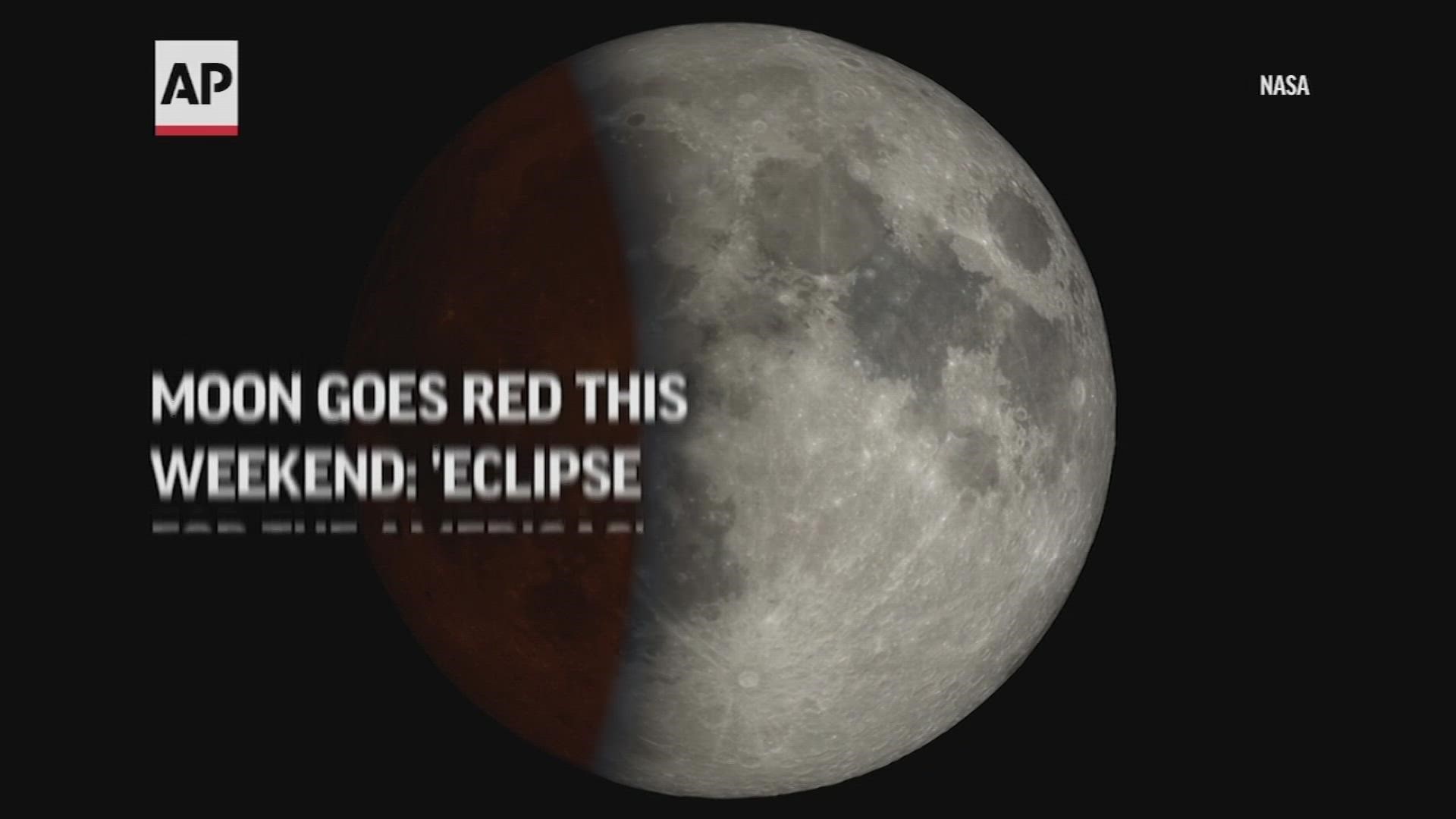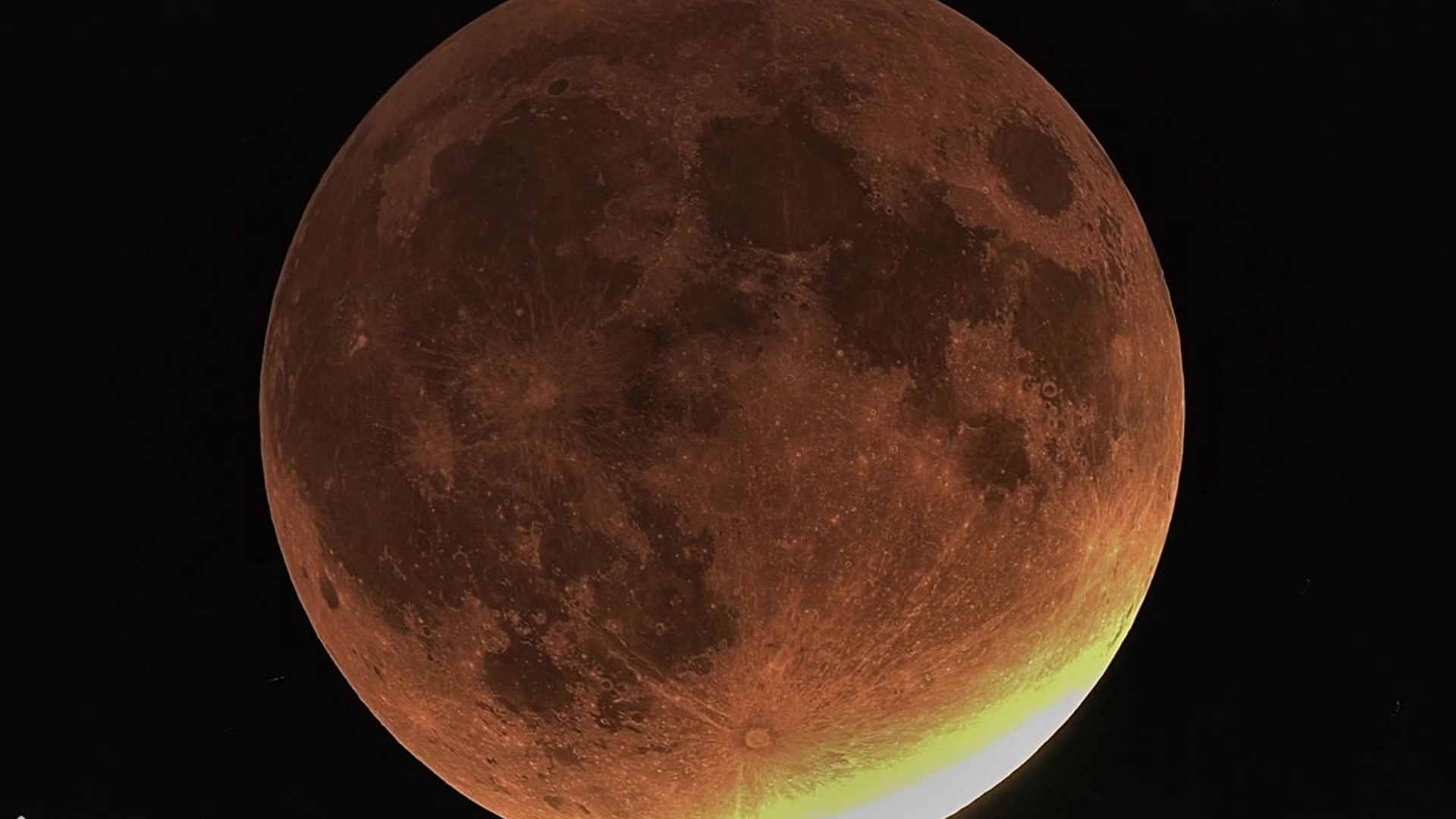CAPE CANAVERAL, Fla. — Much of the U.S. will see the "Super Flower Blood Moon" total lunar eclipse this weekend — and yes, it's really called that.
The sun, moon and Earth will align Sunday night, with Earth casting a shadow on the full moon's surface. The shadow gives the moon a striking reddish hue — that's why lunar eclipses are also called blood moons.
This month's full moon is a "super moon," meaning it looks bigger and brighter than usual because it's at the closest point to Earth in its orbit. The 'flower' part just comes from the May full moon's spring-themed nickname.
Where will the lunar eclipse be visible?
Skywatchers across much of the Americas, Europe and Africa will get to watch the lunar eclipse, but visibility will vary. Here's what NASA says people in the U.S. should expect:
- Eastern U.S.: "The visible part of the eclipse begins about 10:30 p.m. EDT Sunday, with totality starting an hour later and lasting for about an hour and a half. Those in the Eastern U.S. will see the eclipse start with the Moon well above the horizon." Totality starts at about 11:30 p.m. EDT.
- Central U.S.: "The eclipse starts about an hour and a half after dark (9:30 p.m. CDT), with the Moon relatively low in the sky." Totality starts at about 10:30 p.m. CDT.
- West Coast: "The Moon rises with totality beginning or already underway, so you'll want to find a clear view toward the southeast if viewing from there." Totality starts at about 8:30 p.m. PDT.
So what if it's cloudy or you're out of the viewing area? NASA will have a livestream Sunday night. NASA also has more viewing information for different regions here.
Unlike a solar eclipse, you don't need eye protection to watch a lunar eclipse — but binoculars or a telescope will certainly help improve the view.
Why does the moon look red during a lunar eclipse?
NASA says it's the same reason the sky is blue: Rayleigh scattering. Thanks to its longer wavelength, red light travels more directly through the atmosphere than blue light. The sun produces both wavelengths, but blue light is only visible from Earth's surface when the sun is overhead.
During a lunar eclipse, blue light scatters in Earth's atmosphere and only red light reaches the moon. It looks even redder if Earth's atmosphere has a lot of light-blocking dust and clouds.
"It’s as if all the world’s sunrises and sunsets are projected onto the Moon," NASA says.


